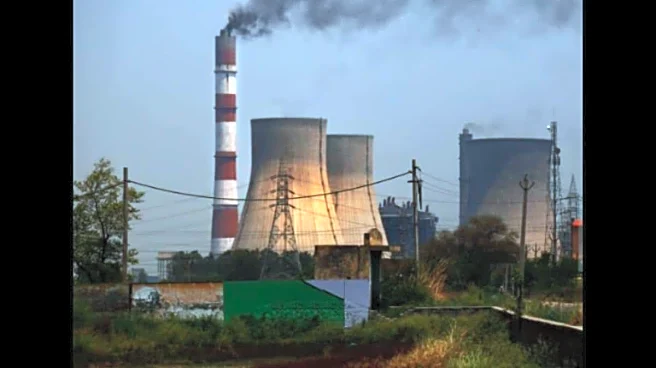Breast cancer has overtaken all other forms of the disease as the leading cause of cancer deaths in India, followed closely by lung and oesophageal cancer, according to the latest Global Burden of Disease
(GBD) 2023 estimates. The study, published in The Lancet, found that cancer remains the world’s second leading cause of death after cardiovascular diseases and is projected to rise sharply in the coming decades.
According to the GBD 2023 analysis, in 2023 there were 18.5 million new cancer cases and 10.4 million deaths worldwide, with nearly two-thirds of deaths occurring in low- and middle-income countries. Risk factors such as tobacco use, diet, infections, and pollution accounted for more than 40% of cancer deaths.
By 2050, global cancer cases are forecast to reach 30.5 million and deaths 18.6 million — increases of 61% and 75% from 2024. The steepest rises are expected in lower-income regions, where health systems are least equipped to cope. Although age-standardised death rates are projected to decline slightly, the pace of decline is insufficient to meet the UN target of reducing premature non-communicable disease deaths by one-third by 2030.
“Cancer is a major contributor to global disease burden, with increasing numbers of cases and deaths forecast up to 2050 and a disproportionate growth in burden in countries with scarce resources,” the study said. “The decline in age-standardised mortality rates from cancer is encouraging but insufficient to meet the Sustainable Development Goal target set for 2030.”
The study added: “In 2050, there will be 30.5 million cases and 18.6 million deaths from cancer globally — 60.7% and 74.5% increases from 2024, respectively. These forecasted increases in deaths are greater in low-income and middle-income countries compared with high-income countries.”
The authors of the study used the Global Burden of Diseases, Injuries, and Risk Factors Study (GBD) 2023 framework to generate and analyse estimates of cancer burden for 47 cancer types or groupings by age, sex, and 204 countries and territories from 1990 to 2023 and forecasted cancer burden up to 2050.
Lead author Dr Lisa Force from the Institute for Health Metrics and Evaluation (IHME), University of Washington, USA, told News18 in an email, “In India, cancer represents a substantial and increasing health burden. Our estimates for 2023 indicate that breast cancer and lung cancer were the leading causes of cancer deaths. These findings underscore the urgency of strengthening cancer control across the continuum—from prevention and early detection to effective treatment, survivorship, and palliative care. India faces unique demographic and health system challenges, and local expertise will be central in setting priorities and tailoring strategies that have the greatest impact. These results are part of the Global Burden of Disease Study, led by the Institute for Health Metrics and Evaluation, which systematically measures health loss from hundreds of diseases and risk factors in 204 countries and territories worldwide. We hope that our estimates provide a useful evidence base to support policymakers and health leaders as they work to reduce the growing toll of cancer in the country.”
What does the data on India show?
In 2023, the five deadliest cancers in India were breast, tracheal-bronchus-lung, oesophageal, stomach, and lip and oral cavity cancers. Breast cancer alone caused 8.5 deaths per 100,000, reflecting both rising incidence among women and persistent delays in diagnosis. Lung cancer (8.4) remains almost equally fatal, driven by smoking, air pollution, and occupational risks. Oesophageal (8.2) and stomach cancers (6.9) highlight the burden of gastrointestinal cancers, while oral cancers (6.5) underline the heavy toll of tobacco and betel quid chewing — behaviours disproportionately prevalent in India compared with many other countries.
Between 1990 and 2023, India’s age-standardised cancer incidence rate rose from 84.8 to 107.2 cases per 100,000, a 26% increase. Mortality also climbed, with the age-standardised death rate rising from 71.7 to 86.9 per 100,000 — a 21% increase.
This means that even after adjusting for population ageing, both cancer incidence and mortality have significantly worsened in India over the past three decades. Compared with global trends, where lung cancer usually dominates, India’s profile is distinct, with breast and oral cancers standing out.
Common cancer types for men and women
The study pointed out that the cancer type with the highest burden in any given country in 2023 differed by sex. Among men, prostate cancer was the most common incident cancer in 112 countries and territories, followed by tracheal, bronchus, and lung cancer (53 countries) and colorectal cancer (17 countries). Among women, breast cancer was the most common in 164 countries, followed by cervical cancer (37 countries).
For cancer deaths, tracheal, bronchus, and lung cancer were the leading causes among men in 111 countries and territories, followed by prostate cancer (57 countries) and stomach cancer (14 countries). Among women, breast cancer was the most common cause of cancer death in 134 countries and territories, followed by tracheal, bronchus, and lung cancer (29 countries).

/images/ppid_59c68470-image-175867759155021209.webp)








/images/ppid_59c68470-image-175856504073498419.webp)



